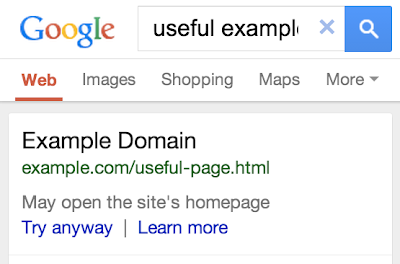Promoting modern websites for modern devices in Google search results
accessibility search resultsWebmaster level: all
A common annoyance for web users is when websites require browser technologies that are not supported by their device. When users access such pages, they may see nothing but a blank space or miss out a large portion of the page's contents.
Starting today in our English search results in the US, we will indicate to searchers when our algorithms detect pages that may not work on their devices. For example, Adobe Flash is not supported on iOS devices or on Android versions 4.1 and higher, and a page whose contents are mostly Flash may be noted like this:

As always, if you need more help you can ask a question in our webmaster forum.
A common annoyance for web users is when websites require browser technologies that are not supported by their device. When users access such pages, they may see nothing but a blank space or miss out a large portion of the page's contents.
Starting today in our English search results in the US, we will indicate to searchers when our algorithms detect pages that may not work on their devices. For example, Adobe Flash is not supported on iOS devices or on Android versions 4.1 and higher, and a page whose contents are mostly Flash may be noted like this:
This search label has been deprecated.

Developing modern multi-device websites
Fortunately, making websites that work on all modern devices is not that hard: websites can use HTML5 since it is universally supported, sometimes exclusively, by all devices. To help webmasters build websites that work on all types of devices regardless of the type of content they wish to serve, we recently announced two resources:- Web Fundamentals: a curated source for modern best practices.
- Web Starter Kit: a starter framework supporting the Web Fundamentals best practices out of the box.
As always, if you need more help you can ask a question in our webmaster forum.


